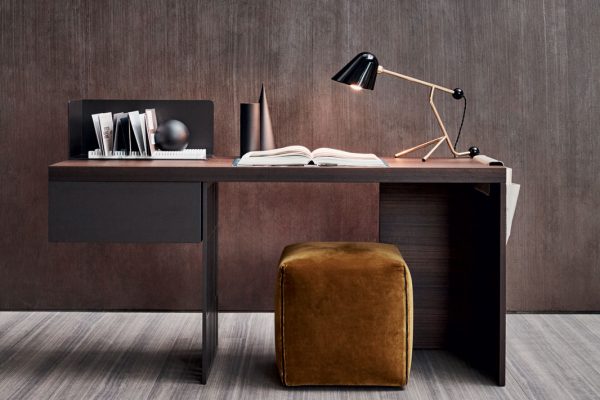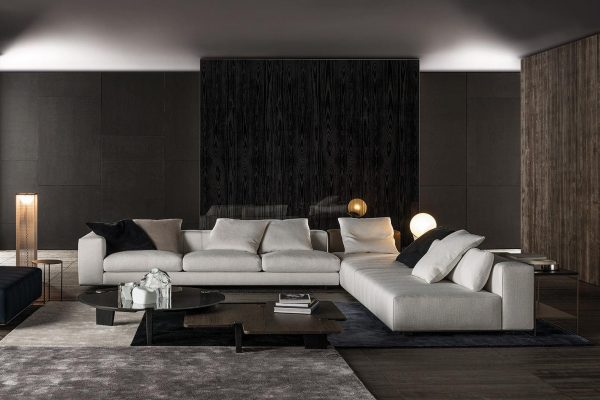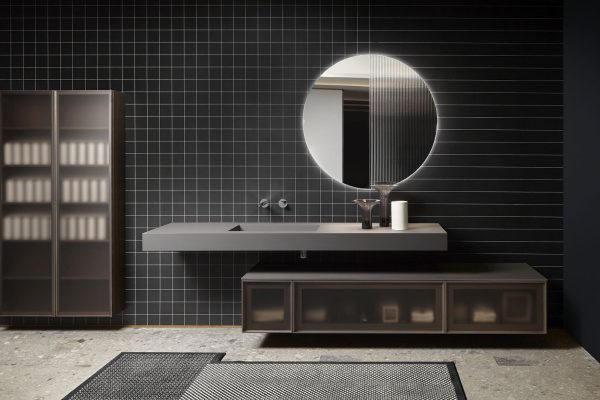One look is enough to recognize
the Barcelona armchair by Knoll
, thanks to its unmistakable features that make it a true icon of the modern movement, the result of the masterful work of designer and architect Ludwig Mies van der Rohe.
Not surprisingly, its famous motto “less is more” is perfectly summarized in Barcelona: a few but perfectly recognizable elements, from the stainless steel frame to the squared texture of the cushion, that make the armchair a timeless classic capable of surviving for decades and inspiring the birth of other products over time.
LUDWIG MIES THE CREATOR OF THE KNOLL BARCELONA CHAIR : HIS STORY
As prestigious as they are, the titles architect or designer are more than reductive to describe the life and career of Ludwig Mies van der Rohe, who was born in Aachen in 1886. His childhood years were spent mainly in the workshop of his father, a stonemason by trade, in which the young man began to cultivate a passion for hand drawing, before working for a number of local artisans and then working on stucco decorations in the early 1900s at Max Fisher, as well as trying his hand, once he moved to Berlin, as a furniture designer at Bruno Paul.
Mies van der Rohe’s career then developed through a series of prestigious collaborations, such as the one that saw him join Peter Behrens’s architectural firm, leading up to the 1920s, when he joined the artists’ association Novembergruppe, within which he defined the cornerstones of the modernist movement, opposed to the German architectural trend of the time that winked at historical styles.
It is to this phase that some projects that were later never realized date, such as the first glass skyscrapers that were the result of careful reflections on the possible use of this material for the construction of buildings, which would later materialize in one of the residences designed within the Weissenhof district of Stuttgart on commission from the Deutsche Werkbund.
1929 was another highlight year for Mies, who curated the design of the universal pavilion for the Barcelona Exposition and designed the famous Barcelona Chair, whose production rights Knoll would acquire more than 20 years later.
From 1937 his life moved to the United States, where for 20 years he taught at the Armour Institute of Technology and continued to experiment with his ideas, encapsulated by the motto “less is more,” which sums up his vision of minimalist architecture. Following this style he designed various historic buildings over the years, from the Farnsworth House to the IBM Building to the Seagram Building in New York, a glass skyscraper that is still among the most iconic in the Big Apple.
Before his death in 1969 in Chicago, Ludwig Mies van der Rohe made time for prestigious awards, such as the Orden Pour le Mérite for Lifetime Achievement, received in Germany, and the Presidential Medal of Freedom in the United States.
KNOLL BARCELONA CHAIR : THE IMMORTAL STYLE
The Barcelona Chair
perfectly embodies the concept of “timeless classic” precisely because the few elements from which it is made, as well as the combination of elegance and simplicity that characterizes it, remain current despite the passage of time, making the chair suitable for any context.
Created as a seat capable of accommodating royalty at the 1929 Exposition held in the Spanish city of the same name, and thus suitable for the “repose of a king,” as stated by Ludwig Mies himself, Barcelona became a true symbol of the modern movement, even though it was inspired by a stool popular in ancient Rome with a curved saddle and four legs crossed in an X shape. Despite the ancient reference, the great formal purity made Barcelona an immense success, and its production was never interrupted from 1930 until today.
Over the decades, of course, the armchair has been updated using the latest techniques and materials, such as steel or the use of first wild boar skin and then cowhide for the upholstery of the squared cushion. All while remaining true to a design that, although conceived as far back as 1930, is still considered modern today.
HOW TO RECOGNIZE AN ORIGINAL BARCELONA ARMCHAIR
To recognize the real Barcelona armchair, it is possible to refer not only to the inimitable style but also to the Studio Knoll logo and Ludwig Mies van der Rohe signature that are on the frame of each authentic piece.
Other distinguishing features include the strictly chrome-plated steel frame, the leather straps that support the seat and back while remaining tightly taut, and the distinctive leather cushions composed of 20 squares, each of which is individually stitched. By relying on these details, you will be sure that you are dealing with an original Barcelona chair.



